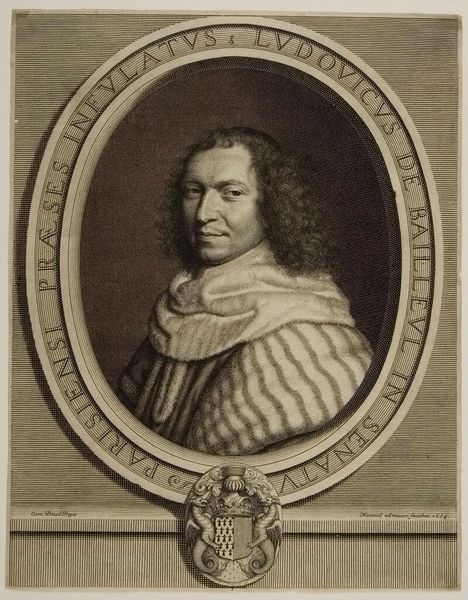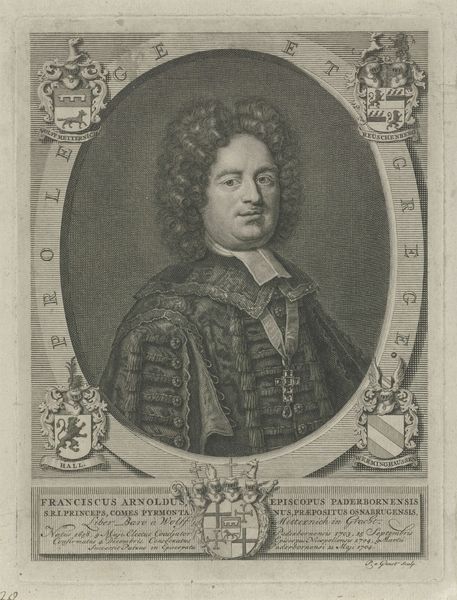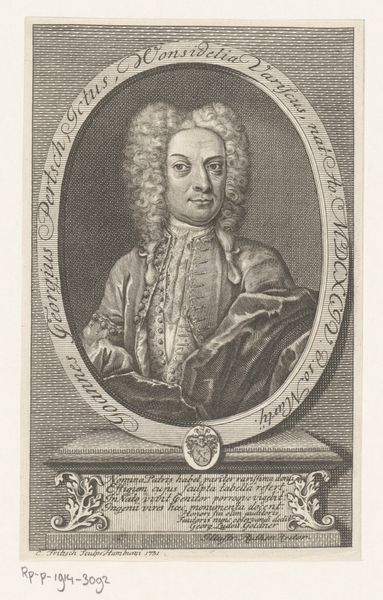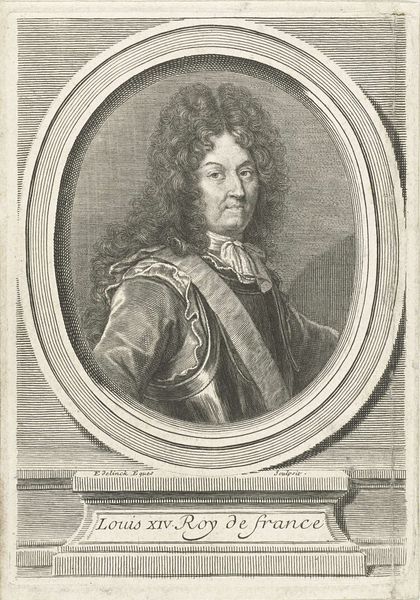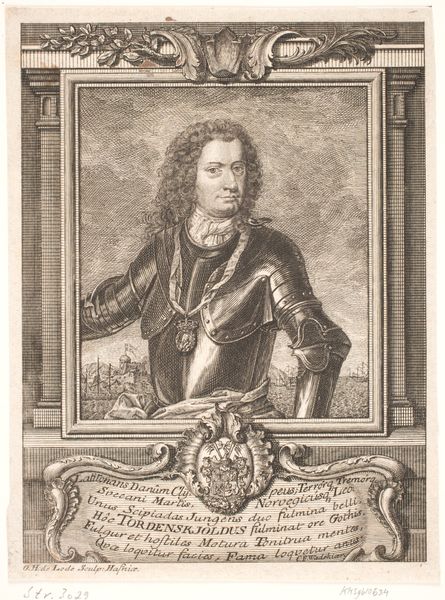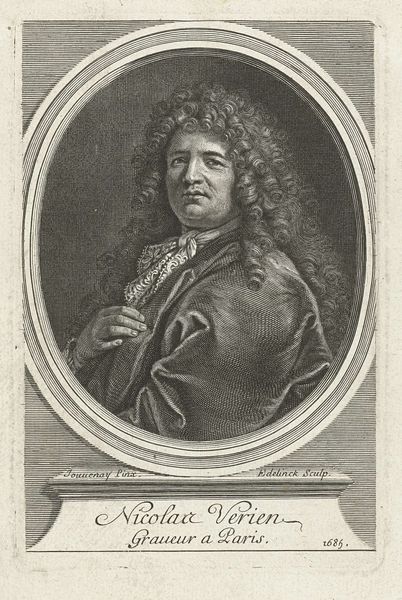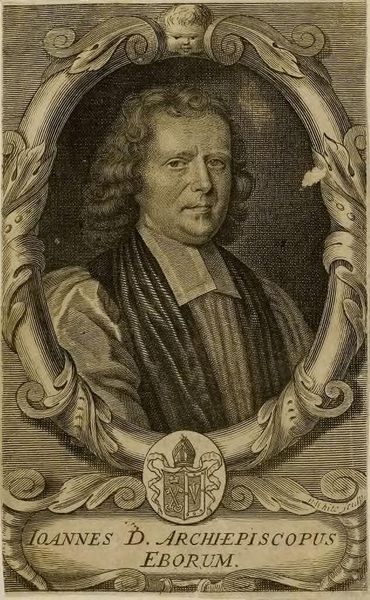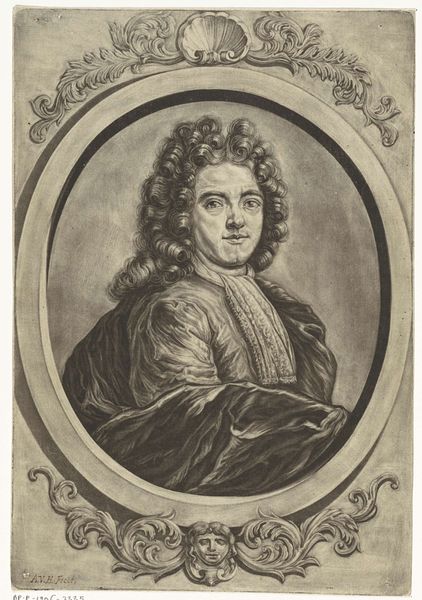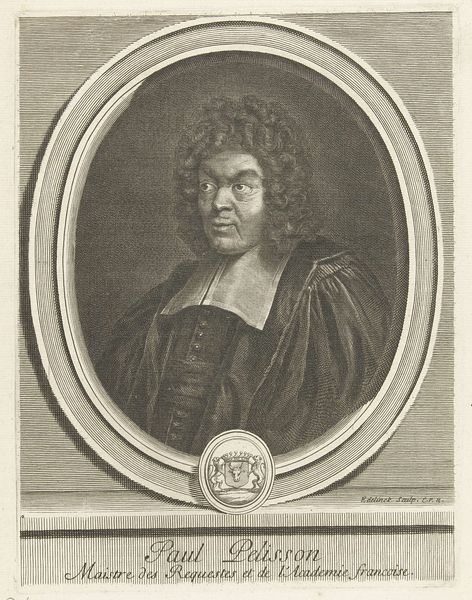
print, engraving
#
portrait
#
baroque
# print
#
old engraving style
#
limited contrast and shading
#
line
#
history-painting
#
engraving
Dimensions: height 88 mm, width 141 mm
Copyright: Rijks Museum: Open Domain
Petrus Clouwet created this portrait of Richard Collin, immortalizing him in ink. Dominating the lower portion is a sphere, an emblem deeply interwoven with knowledge and cosmic understanding. The sphere, or globus, has roots stretching back to antiquity. In Roman art, it symbolized imperial dominion, the emperor holding the world in his hand. As Christianity ascended, the orb was repurposed, topped with a cross to represent Christ's sovereignty over the Earth. Here, the sphere takes on a more secular character, nodding towards Collin's intellectual pursuits. We see echoes of this in Renaissance cartography and scientific illustrations, where the globe signifies exploration, discovery, and the mapping of our world. The human desire to comprehend our place in the universe, from Ptolemy's geocentric model to modern cosmology, reveals itself. This pursuit taps into something primal, that urge to not only see but understand the very fabric of existence. This cyclical return to symbols, and the emotional weight they carry, is not linear; instead, it mirrors the ebbs and flows of human history, resurfacing time and again, imbued with new meaning.
Comments
No comments
Be the first to comment and join the conversation on the ultimate creative platform.

